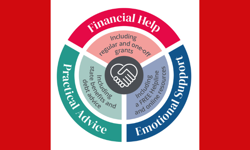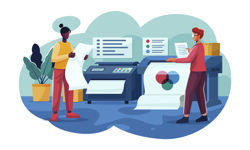With telecom giants investing in high-speed wireless infrastructure, it’s predicted that the country will reach 350 million users by 2015, exceeding the entire population of the United States!
India is currently ranked third in terms of its number of Internet users, behind China and the US. Of the 100+ million Indians online, nine out of 10 utilise social media and 20% benefit from mobile internet. India now has the world’s fastest growing telecom market, (233% year-on-year) driven by cheaper data rates and improved handsets. Within three years, more than half of the country’s internet users will access the web from their mobile phones.
Of course, India has a long way to go before the benefits of the Internet can be fully realised. A ranking of 118 out of 154 for its Information and Communication Technologies (ICT) development status, shows that despite India’s significance as a global IT hub, a majority of Indians have yet to even acquire fixed telephone lines, a basic necessity for gaining Internet access.
But publishers can’t afford to ignore the great potential and the growth rates this country affords. With all the emerging options, the most successful media companies will be those capitalising on the huge emerging global audience by publishing content on multiple platforms. Readers should be able to specify which channels (print, online, mobile, tablet, e-reader) they want to use, at which times of day, and for which types of news, information, events, and advertising content.
Some tech-savvy businesses have been quick to tap in to this potential. Dinamalar, a Tamil language daily newspaper distributed in the Indian state of Tamil Nadu, has surged forward on the new media front. The 60 year-old title is the world's number one Tamil language newspaper site, delivering the latest regional and world news, business, financial, political and entertainment stories, and attracting more than two million unique visitors and 190 million page views each month.
Dinamalar is also available as an iPhone, iPod and iPad app which it claims ‘provides its enriched content with a better user experience’. All have recorded a substantial number of downloads and page views, with various apps also being made available on the Android platform. Currently these are offered free, but the paid route is likely to be implemented soon.
With such success from Dinamalar’s approach, it’s likely that internet and app usage will graduate from an early adopter phase to broader take-up this year. Publishers are encouraged to take advantage of the digital revolution in India and start building new business models for delivering content online.
As well as embracing the huge opportunity to diversify their offering, publishers should consider the revenue earning potential online provides. These lie in periodical subscription, adopting the pay-per-use model, hosting regular banner ads and innovative video ads. Currently internet advertising accounts for just three percent of the Indian advertising market, but is capable of much higher growth rates than other mediums. With an estimated value of $6.3 bn in 2012, this could have significant implications for publishers.
The entire publishing industry in India will eventually go digital. We will see a seamless convergence between web and mobile internet audiences with the surge in smartphones and internet penetration. Mobile has become an entry pointy for many users, and with more and more people consuming the internet through mobile, the number of smartphones may well surpass the number of PCs. Getting on board with cross-media publishing now will help ensure your customers remain loyal, your content becomes king, and the royalties become yours.
India: A Snapshot
* 1.2 billion citizens
* Over 100 million Internet users – 8% of total population
* 22 official languages and 844 regional dialects
* 9% GDP growth in economy for the last three years
* More than 4,000 daily newspapers
* Top three are Indian language newspapers










